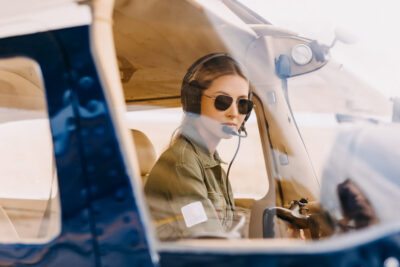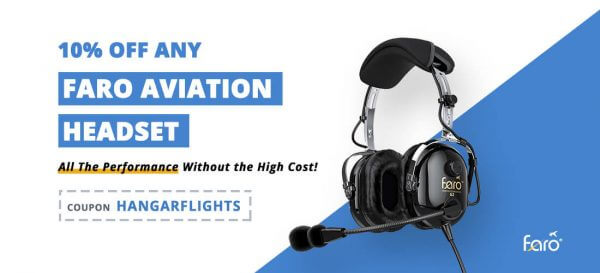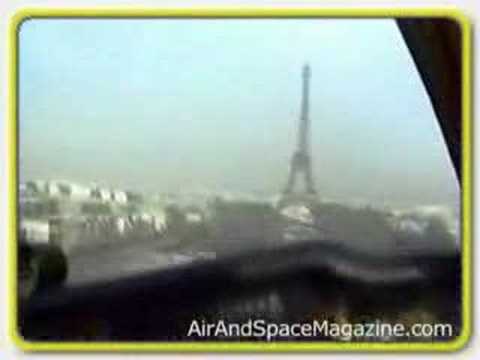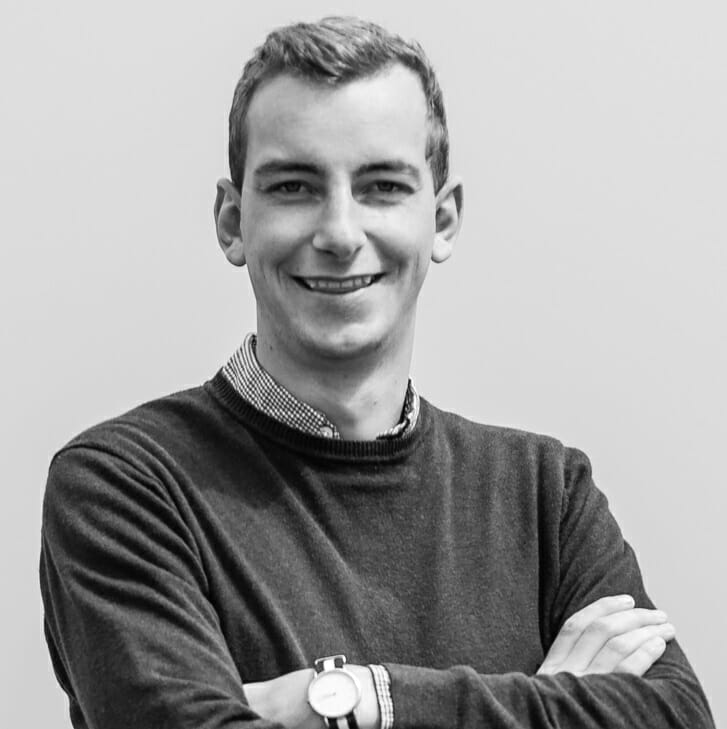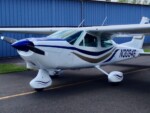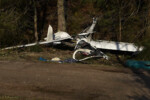A Bonanza in Paris – Under the Eiffel Tower
3 February 2018 | Updated on February 05, 2024
This story originally appeared in Air and Space Magazine. All rights go to the original author and publisher.
by Robert J. Moriarty


My flight under the Eiffel Tower began with a visit to the Hurricane Tracking Center in Coral Gables, Florida in early 1984.
But first, a little background. With two years in Vietnam and 824 missions as a Marine F-4B pilot and O-1C/G Forward Air Controller, I knew dangerous flying well. Knowing the flight envelope of my aircraft and that of myself came as second nature. I came back from overseas in 1970 and left the Marine Corps. After a short but boring introduction into the world of giant computers, by 1975 life found me ready to return to my first true love: aviation. As luck would have it, I ran into a pilot in Danbury, Connecticut, preparing to deliver a single-engine Piper to South Africa.
Sales of general aviation aircraft soared during the 1970s, peaking at almost 20,000 airplanes in 1979. About 10 percent of the aircraft produced went to overseas customers, providing a billion-dollar boost to the balance of payments. Aircraft as small and slow as Cessna 172s struggled through ice and the bitter gales of the North Atlantic in wintertime to find a new home abroad. Until lawyers strangled the industry, general aviation provided a living to tens of thousands of Americans. I was one of them. I flew over 240 overseas deliveries as a ferry pilot between 1975 and 1982, mostly in single-engine aircraft. My trips took me from Florida to Sydney, Lock Haven to Singapore, with two or three flights to Europe in between each month. I flew everything from a Piper Archer to an F-227 and even an ancient Paris jet from the 1950s.
In 1980, I became involved with the flight of the first person to fly across the Atlantic standing. Well, not really–he was actually well-strapped onto the roof. Jaromir Wagner was a West German stunt man hell-bent to make his fame and fortune in Hollywood. His trip across the Atlantic on the top of a Britten-Norman Islander convinced me that there was one place more uncomfortable than in the pilot’s seat of that noisy but slow beast of an aircraft. I landed him safely in Caldwell, New Jersey, in early October of 1980 after a victory circle around the Statue of Liberty.
He found his fifteen minutes of glory only to soon return to his more mundane job as a car mechanic in Germany. His lack of spoken English prevented him from exploiting his momentary claim to fame. I watched with a grimace as he stood like a wooden Indian in interview after interview, saying only “For the glory” in response to every question asked of him.
1981 found me deeply involved in my first air race, from Paris to New York to Paris. A total of 115 contestants spent a bundle trying to claim superiority over all the other contestants.
Simple logic showed me I could not compete against the vast resources of some of the other pilots but maybe I could outsmart them. At the time I had some 10,000 hours of overwater flying so nobody would beat me based on experience. But like so many speed races, they certainly could outspend me.
The race had two separate categories, one for single-engine and one for multi-engine. Most of the big spenders chose to fly twins. I searched around and found Mike Smith of Mike Smith Speed Conversions of Johnson, Kansas. Mike, an engineer with only a high-school education, knew more about speed and methods of drag reduction than the giant staffs polishing chairs at Cessna, Piper, and Beech. He could take a standard Beech V-35 Bonanza and tack on an extra 20 knots simply by cleaning up the airplane. His own airplane, N111MS, painted a god-awful black under the theory the color increased speed similar to the SR-71, could cruise comfortably at over 200 knots sipping a miserly 10 gallons of fuel an hour.
I approached Mike with my scheme for entering the race in his plane, winning and gaining lots of publicity and fortune for the pair of us. My plans fell on deaf ears until he learned of my 42 Air Medals and three Distinguished Flying Crosses in Vietnam. Mike, who might have made great cannon fodder for the grist-mill of Vietnam, suffered from a bad ear and he failed his physical when he actually wanted to serve his country. Mike was the first person I ran into who felt this country owed a debt to the men and women who served in Vietnam. Mike gave me his plane at no cost to use.
In any form of combat, success often depends on stealth and cunning. In air-to-air combat you don’t need to be a better pilot than the enemy or fly a superior aircraft. All you have to do is force him into mistakes. Once your opponent decides you have him whipped, the belief becomes self fulfilling.
Equipped with Mike Smith’s mighty steed, I figured out I should try to win the race before the first airplane left Paris. I determined that if the winds would cooperate, I would attempt to break Lindbergh’s record from New York to Paris.
On June 4 and 5 of 1981 I flew from New York to Paris in record time and cut Lindbergh’s time in half for my first record. My primary opponent in fact had a Windecker Eagle, a silky-smooth fiberglass aircraft powered by the same Continental TSIO-520 in N111MS, and about 10 knots faster. We filed for and set another record from Paris-New York on the first leg of the race in Mike Smith’s airplane. The other guy must have decided he’d had enough. He gave up. My copilot Tom Danaher and I just kept flying and beat the rest of the pack by a blistering 40 minutes.
In the fall of 1983, Richard Fenwic, one of the participants in the first Air-Transat called me from Paris to tell me about another race, from Paris to Libreville in Gabon in March of 1984. First prize turned out to be a French-built plane worth about $150,000 and Fenwic wanted only the glory. I could have the airplane. That sounded like a pretty good deal to me.
This time the rules called for each aircraft to be assigned a handicap similar to sailboat racing where every contestant could compete on an equal basis with the rest of the pack. Like most sailboat racers, I figured, there’s equal and there’s equal. So I wrote a computer program to figure out the square footage of the wing area and engine horsepower for all the aircraft I might consider using. My results showed the Piper Malibu had a tremendous advantage due to its small wing area and ability to cruise at high altitude. I figured anyone smart enough to program a computer and rich enough to pay for an airplane would be flying a Malibu, and that would be the aircraft to beat. And so it was.
My approach to the Eiffel Tower led me next to the Hurricane Tracking Center in Coral Gables. Since the Malibu depended on performance at altitude, I needed to confirm the cooperation of the Wind Gods. I pored over book after book showing prevailing wind patterns worldwide at every altitude all over the world for every month of the year. The race consisted of one leg to Ouagadougou in North Central Africa and then on to our roost in Libreville, Gabon.
My eyes widened as I went through the prevailing wind charts. In late winter we would be running into westerly winds averaging 80 knots at 22,000 feet. With a southerly heading, those winds would convert into a 30-knot headwind. At lower altitudes around 10,000, an airplane might even average a tail wind most of the journey. I smiled a wicked smile and rushed off to notify Fenwic that we needed to change our steed.
Again I found myself winging my way from North America to Paris for another race in early March of 1984 in Mike Smith’s N111MS. Since my little scam of setting a record before a race worked so well in 1981, I repeated my pattern and set one record from Washington, D.C., to Paris and broke Lindbergh’s record from New York to Paris in another category. Mike Smith, Dickie Fenwic, and I agreed we had the race sewed up. All we had to do is take off twice and land twice. Fenwic could keep all the glory and I’d sell the airplane and support myself in the fashion I’d like to live. The best laid plans of mice and men oft go astray.
No one else actually looked at the winds in advance of the race. Why bother? We waited with a smile on our faces and a chortle in our hearts when the race organizers handed out the first weather pattern charts at a briefing just before the race. Our primary competitors, equipped with a high-altitude Malibu, sat in front of us with a silly smirk on their faces–right up until they analyzed the effects of what turned out to be a 50-knot headwind. Down at 10,000 we faced a 10-knot headwind, but if they came down to our altitude, they gave up 50 knots of true airspeed. They were caught between the proverbial rock and a hard place.
We left Paris in the early evening. At the very last minute Fenwic announced the addition of an extra passenger, a TV star who wanted to do a segment on the winning team. Generally I’ve found it better to become the winning team before adding dead weight to your craft. We took off with three people and two floatation survival suits. But so what?
The winds required us to fly over to Portugal and then down across the Atlantic side of the Straits of Gibraltar on our way to our first pit stop. About 50 miles south of Faro in southernmost Portugal I glanced at the oil pressure, which was rapidly going south as the oil temperature headed north. We were a hundred miles from landfall in Africa. Our nearest safe landing point lay behind us, in the worst direction. Discretion being the better part of valor, I declared an emergency and turned back to Faro. Fenwic and our passenger put on the survival suits and prepared for ditching while I did the only sensible thing I could do–I opened a pack of cigarettes and fired up. (Lung cancer was hardly the biggest danger I faced.)
We landed in Faro in the dead of night. An hour later a fuel truck showed up carrying oil. We poured oil into the engine and carefully measured the dipstick with each passing quart. Our 12-quart sump took exactly 12 quarts, which wasn’t a good sign.
Our dismal crew of three spent the night in a tiny room in Faro before returning to the airport the next day to see what could be done about our aircraft. The TV star, unimpressed by our performance, returned to Paris on a commercial flight.
A few hours of exorbitant phone calls around Portugal convinced Fenwic we had better figure out how to fly the airplane back to Paris or risk financial ruin having it repaired at the leisure of the only general aviation mechanic in the country capable of fixing the engine. We figured we couldn’t possibly do any more damage than had already been done, so we just flew back to Paris, burning only three quarts of oil in the process.
Once we had a cylinder replaced on the engine, our airplane sat on the ramp with nowhere to go. Fenwic fumed over his lack of publicity. After a couple of bottles of wine and a great French dinner, he came up with a great idea. He would file for and fly a dozen or more city-to-city records within Europe. He rethought his scheme when he learned each attempt would cost him $750 in fees.
After another wonderful meal and a couple of bottles of so-so French wine, he came up with his next brainstorm. We should fly the airplane through the arches of the Eiffel Tower. I pointed out it wasn’t really worth doing as it had been done during World War II, at least according to my faint memory. He insisted no one had ever flown under the tower and set out to prove it. (Later, Fenwic became president of the French Aero club and all agreed the tower had cables to prevent exactly what we had in mind all during the war.)
Fenwic continued to elaborate on just how we should proceed. Since the French authorities might take umbrage at the audacity of any pilot actually attempting the feat, I should do the flying and take the blame. He would take the credit.
That didn’t seem all that fair to me. It seemed to me that the blame and credit should fall in equal portions. As time went on, Fenwic liked the idea of taking the credit even more and gradually seemed to back out completely from the idea of actually being in the airplane, which was fine by me.
We arranged for a French news agency to take pictures from the ground. They even came up with the idea of having a cameraman in the airplane. We made our plans.
A walk around of the tower showed me the flight might actually be a lot easier than the carrier landings I made as an 18-year-old Marine aviation cadet. At one end of a mile long grassy strip lay the Ecole Militaire. If I flew low over the city and dipped down to treetop level down the strip, I’d have a 30-second line up for the tower entrance. The arch is almost 200 feet high and 250 feet wide, so my 35-foot wingspan fit easily. Once through the tower, a slight climb would clear the open area between the buildings of the Trocadero Museum.
Someone has flown through the Arc de Triomphe, with mere feet to spare. In comparison, the Eiffel Tower made the aircraft carrier Lexington look like a postage stamp. You could fly a 747 through the Eiffel Tower with a bit of room to spare.
The photographer met me at the airplane on the morning of March 31, 1984, at Le Bourget Airport, home to Lindbergh’s landing some 60 years ago. As he wandered around the airplane becoming more and more nervous, I sensed he would back out of the flight. Some ideas sound great after a bottle of wine but lose their brilliance in the cold light of day. He didn’t want to risk his life on some silly, possibly suicidal flight. But then he looked into the airplane and suddenly settled down and was ready. (I later learned that the idea of the flight terrified him until he saw a $75 French ham I had put in the back of the airplane to bring back to Miami. He figured that no one with any sense would spend that kind of money on a ham before going on a suicide run.)
I filed a visual flight plan to Shannon, Ireland, and we set off on our adventure, camera running. Dickie had a VHF radio and stood at the base of the tower. He would give me last minute information about safety in the event the authorities had caught wind of our idea. I made contact with him only to learn my way remained clear. Just as I had planned, I slid over the shoulder of the Ecole Militaire, lined up down the grassy pathway, and swooped through the span at about 11:15 on the morning of March 31, 1984.
It was a beautiful spring morning with maybe 5,000 people around the park and immediate area of the Eiffel Tower. In a few short minutes word spread to everyone that someone had flown through the Tower. Though not everyone saw the airplane, lots of people knew about it in short order.
After clearing the city of Paris, I landed at a small dirt strip north of the city and dropped off the cameraman.
The French authorities censored the story and no one printed a word about it until about 10 days later when the news value had died to near zero. People magazine did a story in the United States in late April of 1984.
I made only one mistake. Instead of doing the flight on the 31st of March, I should have waited one more day.
– Robert J. Moriarty
Robert J. Moriarty (born September 9, 1946) is an American Marine F-4B fighter pilot who holds the record as the youngest naval aviator (at age 20) in the Vietnam war, achieving the rank of captain in the Marines at age 22. Before leaving military service in 1970, he recorded 824 combat missions.








